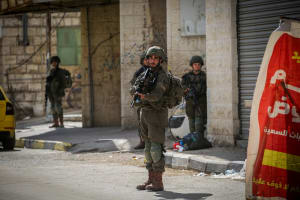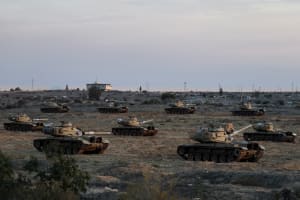After delay, temporary humanitarian aid pier on Gaza coast to be operational within days

The U.S. military established a temporary pier along Gaza’s coastline, serving as a new entry point for humanitarian aid into the enclave. The pier is expected to become operational within days, possibly as soon as Friday.
This development comes as the flow of supplies through land borders has been severely disrupted since Israel began its targeted operations in Rafah last week.
In March, the United States decided to build the pier as part of an international effort to increase the flow of humanitarian aid into the Gaza Strip amid the ongoing war between Israel and the Hamas terrorist organization.
Once operational, the pier is expected to handle aid shipments from Cyprus, subject to Israeli security checks to ensure they do not contain weapons or other vital items for Hamas. Due to the absence of modern harbor facilities in Gaza, vessels will unload the aid a few kilometers offshore. Smaller ships, each capable of transporting between 5 and 15 loads, will then transfer the aid ashore.
Israel has facilitated an increased inflow of humanitarian aid into Gaza. However, USAID Response Director Dan Dieckhaus claims the humanitarian situation in Gaza remains critical.
“Humanitarian conditions are deteriorating, and insecurity is escalating, particularly in Rafah, and civilians are suffering,” Dieckhaus argued. “More than half the population in northern Gaza is facing catastrophic levels of food insecurity.”
There is substantial concern that Hamas operatives will try to interfere with the delivery of aid to Palestinian civilians in Gaza. This is because Hamas stands to gain politically from a worsening humanitarian crisis in Gaza, which can escalate international pressure on Israel.
However, Vice Admiral Bradley Cooper, deputy commander of the U.S. Central Command (CENTCOM), warned any regional players against attempting to harm the pier and the aid shipping efforts.
"Any attack on those working on the mission is an attack on aid for the people of Gaza,” Cooper stated.
British Foreign Secretary David Cameron announced that aid from the United Kingdom would soon reach Gaza’s population via the U.S.-built pier.
"This first shipment contains 8,400 shelter kits, which will be distributed to those most in need. We’re working with the US, Cyprus and other partners to get as much aid in as we can by all possible routes," Cameron wrote on 𝕏.
U.S. Pentagon Deputy Press Secretary Sabrina Singh announced last week that the pier was already complete but not operational due to bad weather conditions off Gaza’s Mediterranean coast.
“As of today, the construction of the two portions of the JLOTS – the floating pier and the Trident pier – are complete and awaiting final movement offshore,” Singh told journalists, adding that the "forecasted high winds and high sea swells" created "unsafe conditions for the JLOTS components to be moved."
"So, the pier sections and military vessels involved in its construction are still positioned at the port of Ashdod," she added, referring to the nearby Israeli Mediterranean port.
While the Biden administration is eager to have the pier operational as quickly as possible, it emphasized that the pier is intended to be a complementary aid route to the larger land-based humanitarian aid efforts.
Last Sunday, the Israeli military announced the opening of a third land-based aid crossing to northern Gaza, which the IDF defined “as part of the effort to increase aid routes to the Gaza Strip, and to the northern Gaza Strip in particular.”
Originally estimated at $180 million, the cost of the Gaza humanitarian aid pier is now believed to have nearly doubled to $320 million.

The All Israel News Staff is a team of journalists in Israel.
You might also like to read this:














